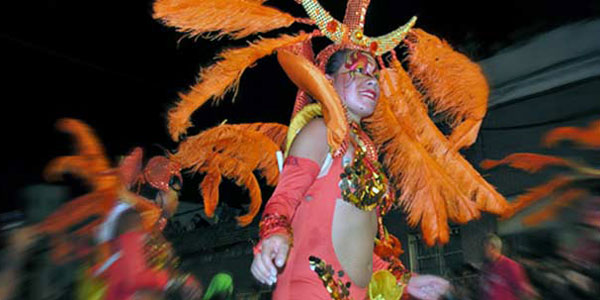Montevideo Carnival
The carnival

As from 1750, a countless amount of slaves coming from Africa began arriving in the City of Montevideo. Even though they all had been born on the same continent, they belonged to very different ethnic groups. Most of them came from various parts of Africa, namely the East, the equatorial area and the Bantu tribes, but other zones of Western Africa also experienced the loss of their best youths and warriors.
In those days, millions of colored men became part of the collection of slaves and servants owned by the well-off families, both in the City of Montevideo and in neighboring Buenos Aires (Argentina). All the hard labor in America was done by the slaves. Not only were these men humiliated for centuries, but they also lacked an identity of their own on the new continent.
Sad, lonely and aimless, they longed for their music, their religion, their habits and, especially, their land. Their masters, who generally even believed they were doing them a favor by letting them be at their service, would inflict very hard punishments on their nostalgia or memories from their happy past.
It was Carnival which helped them resist. Every now and then, the slaves would remember the old African drums they used to perform their hunting, social or religious rites. Thus, what today has come to be called candombe began. It is a drum-based rhythm and dance created by these ethnic groups who arrived in the lands of the Río de la Plata on Spanish and English ships. Before the abolition of slavery, with the permission of their masters, these men and women would gather in the houses located in the oldest part of Montevideo and get in touch with their origins.
When freedom arrived, they began to get together in the poorest neighborhoods in town, such as Sur and Palermo, where the ancient Llamadas (calls) were already being held.
The presence of the lubolos in the Llamadas was the best idea the white men had in order to apologize in public for such savagery and genocide. The lubolos are white men disguised as black men in order to feel Carnival just like they do.
Whoever watches the show from the outside only sees happy men and women celebrating one of the most beautiful feast in Uruguay: the Montevideo Carnival. Brothers which may have different skin colors but should always be seen as human beings.
© 2007-2025 Total or partial reproduction forbidden. Derechos de Autor 675244 Ley 11723
Who we are | Contact us | Terms and Conditions



